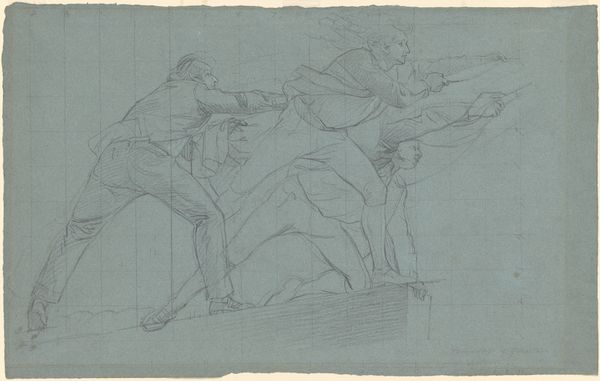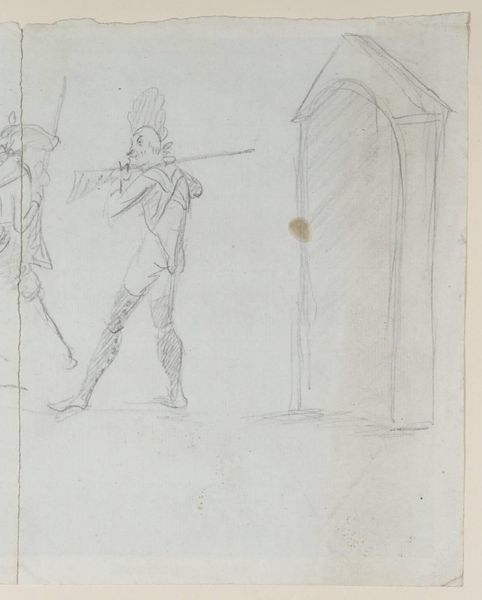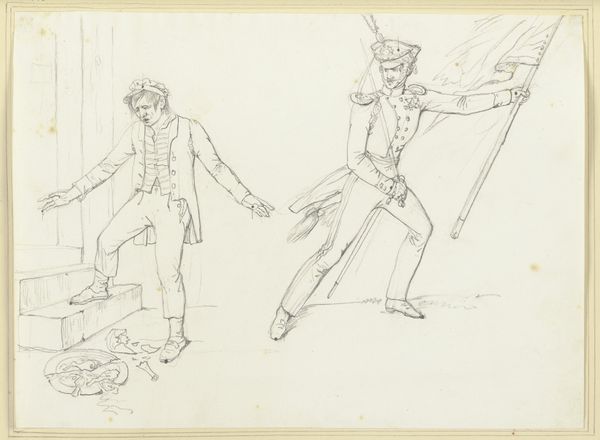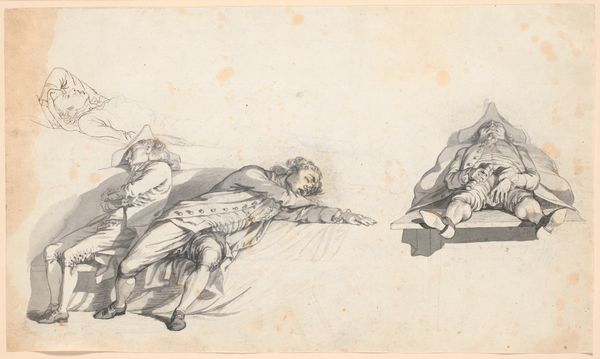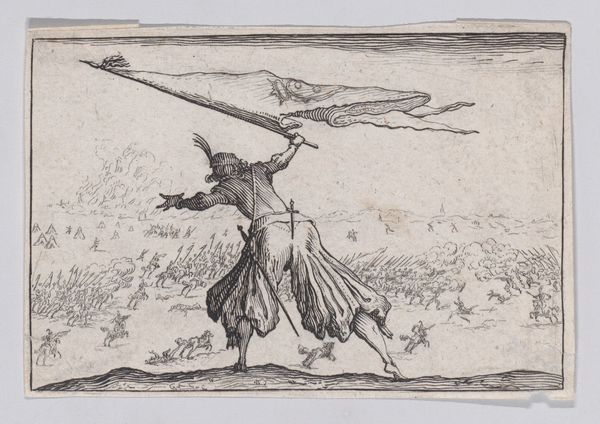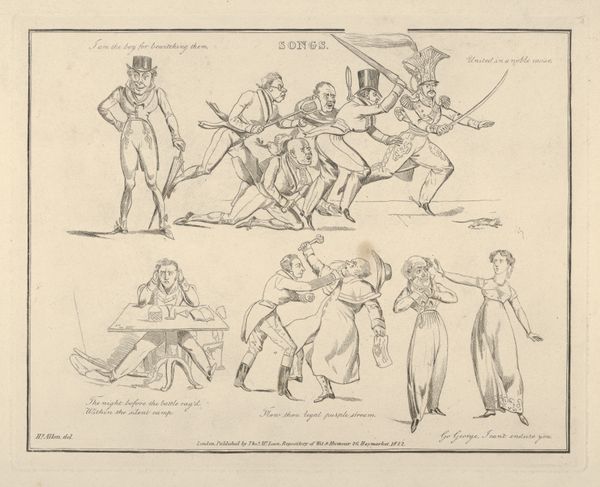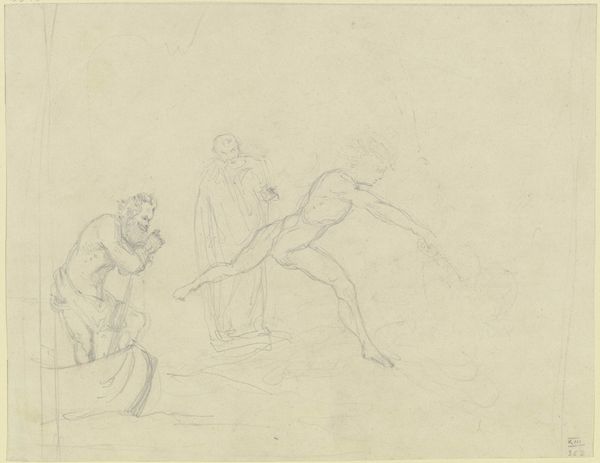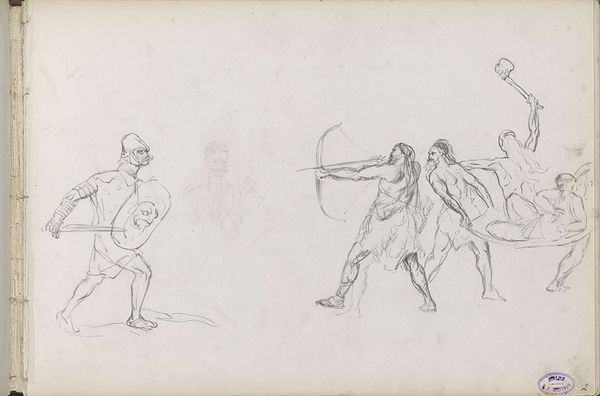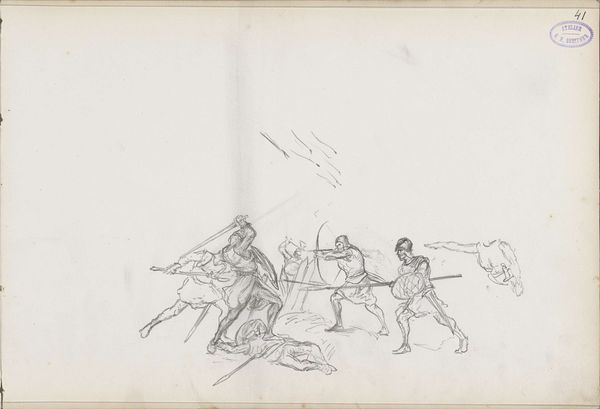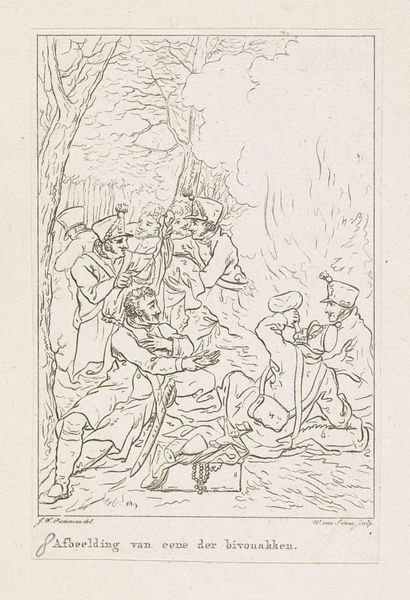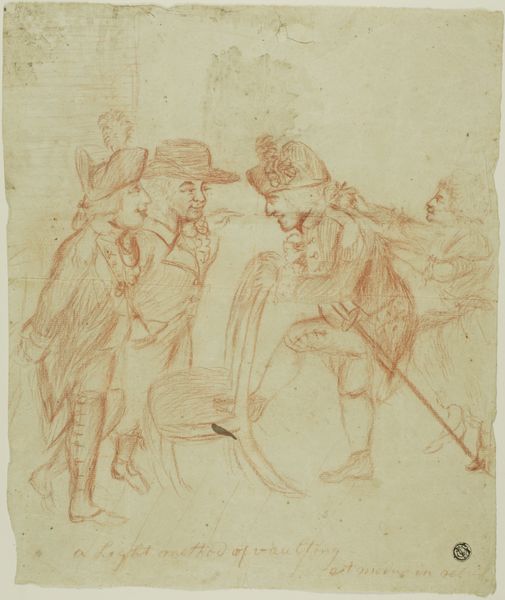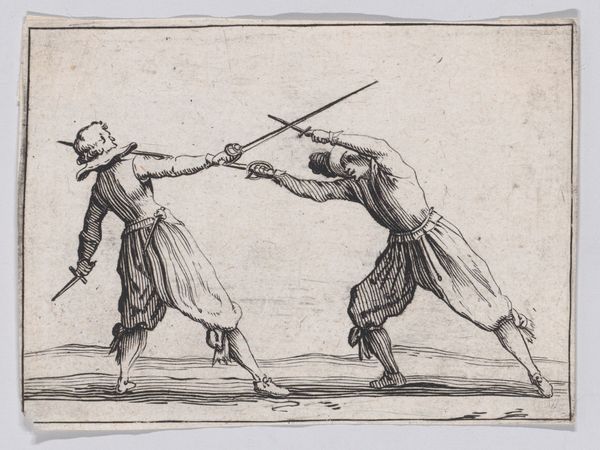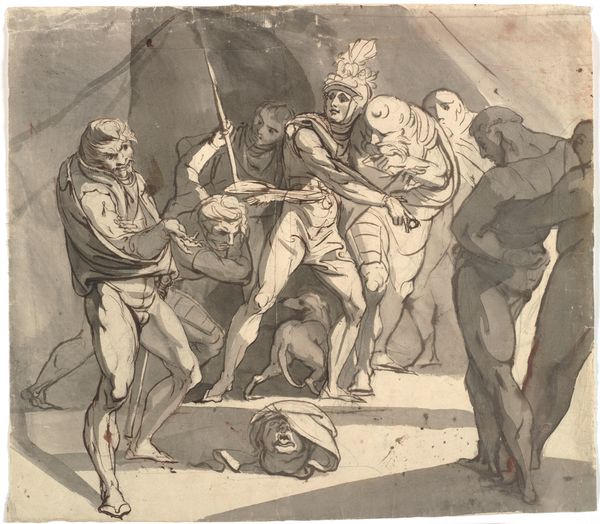
Study for "The Surrender of the Dutch Admiral De Winter to Admiral Duncan, October 11, 1797": Admiral De Winter Raising the Colors 1798
0:00
0:00
drawing, paper, pencil
#
portrait
#
drawing
#
pencil sketch
#
study drawing
#
figuration
#
paper
#
pencil
#
men
#
line
#
history-painting
#
academic-art
#
sword
Dimensions: 13 x 18 1/2 in. (33 x 47 cm)
Copyright: Public Domain
Editor: Here we have a preparatory sketch by John Singleton Copley, dating from 1798. It's a study in pencil for a larger history painting, depicting the surrender of a Dutch Admiral. The cool gray paper really gives the figures a ghostly, fleeting presence. What catches your eye? Curator: It whispers of power, doesn't it? All those elegantly drafted lines giving weight to a grand historical narrative. Yet, the unfinished quality allows us to glimpse the artist's thought process, those revisions and adjustments visible in the swirling pencil strokes. It makes me wonder, what choices was Copley grappling with? Did he see this moment of surrender as a tragedy or a triumph, or something more complex? What kind of feeling did he want to trigger in people’s minds? Editor: That's a great question. It’s fascinating to consider that the artist could capture such ambivalence with just a few lines. What do you make of the body language? Curator: Ah, the bodies tell their own stories! The admiral, sword in hand, a posture almost defiant. And the surrendering men, clustered, vulnerable, almost floating. They are surrendering, not jumping up and down of joy, I bet! The sketch hints at the emotional weight of defeat and the fleeting nature of victory, even if he does not fully describe everything in a realistic way. Copley, in his genius, captures the quiet before the storm…or after, maybe. Editor: It really reframes how I initially saw the drawing. What I perceived as just a historical record has now opened up to a richer emotional understanding. Thanks for shedding light on it! Curator: Indeed, these preliminary works possess a certain magic, a glimpse behind the curtain. I believe it can make art less about an accurate depiction, and more about emotion!
Comments
No comments
Be the first to comment and join the conversation on the ultimate creative platform.
